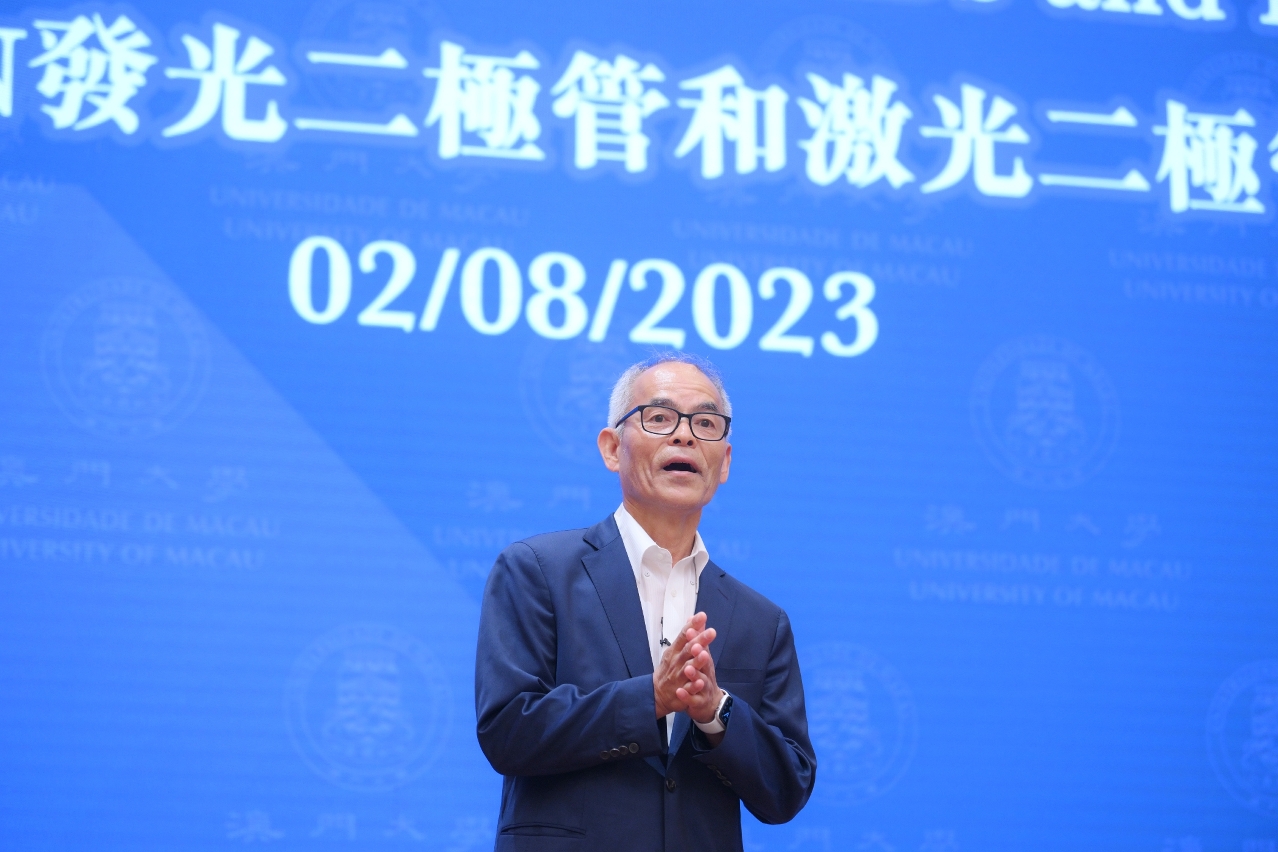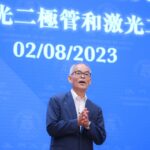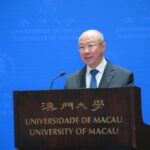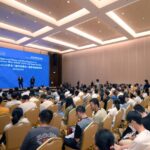 Shuji Nakamura
Shuji Nakamura
The University of Macau (UM) today (2 August) held a Doctor honoris causa Lecture, with Prof Shuji Nakamura, who received a Doctor of Science honoris causa degree from UM in 2020 and the 2014 Nobel Prize in Physics, as the keynote speaker. Prof Nakamura gave a talk titled ‘Background Story and Development of High Efficiency Blue InGaN LEDs and Laser Diodes’, and shared his experience in the invention of high efficiency blue LEDs and laser diodes, as well as his perspectives on their future applications. He also met with UM’s management and researchers to discuss the development of cutting-edge research.
Vice Rector Michael Hui, representing the rector of UM, said in his speech that Prof Nakamura is a pioneer of sustainable energy technology and a great physicist of solid-state materials. He, along with two other scientists, was awarded the 2014 Nobel Prize in Physics for the invention of high efficiency blue LEDs. Another accomplishment of Prof Nakamura is the development of blue laser diodes, which led to its significant application in data storage. His inventions have not only revolutionised the lighting industry, but have also made a significant contribution to human well-being. UM is committed to promoting research development, and its Institute of Applied Physics and Materials Engineering (IAPME), which places equal emphasis on infrastructure and applied research, aims to develop real-world solutions to future technological challenges. One of IAPME’s core research areas is optoelectronic materials and devices, which is in line with the theme of the talk.
During the talk, Prof Nakamura shared his experience and explained how, despite limited resources, he broke away from conventional thinking and chose the gallium nitride system as his research direction, which led to breakthroughs in the field of LEDs and blue and green semiconductor lasers, and contributed greatly to society’s advancement. He also shared his perspectives on the future applications of LEDs and laser diodes. In terms of intelligent lighting, both can be used in agriculture and gardening, artistic decoration, vehicle, interior lighting, and more. In terms of display technology, they can be used for virtual reality and augmented reality. In terms of communication, they can be used for wireless communication, underwater communication, and satellite communication. The Q&A and exchange session was moderated by Sun Handong, Distinguished Professor in the IAPME. Prof Nakamura encouraged young people to develop innovative thinking, to think outside the box when choosing research direction, and to dare to take a research path different from others.
After the talk, Prof Nakamura visited UM’s research facilities, including the State Key Laboratory of Internet of Things for Smart City, the IAPME, and the library. He exchanged views with the management and researchers of the university and learned about UM’s latest developments in academic layout, research layout, and industry-academia collaboration. He praised the university for its research achievements in the fields of photovoltaic materials and devices as well as luminescent materials and devices, and had discussions with UM researchers on topics such as the development of disciplines and future planning, hoping that the two sides will strengthen exchanges and cooperation, make full use of their strengths, and jointly contribute to the development of applied physics and materials science.
Prof Nakamura is currently the research director of Solid State Lighting and Energy Electronics Center and the Cree professor in Solid State Lighting and Display at the University of California, Santa Barbara. He received the 2006 Millennium Technology Prize for his invention of revolutionary new energy-saving light sources and the 2014 Nobel Prize in Physics for his invention of high efficiency blue LEDs. He also received a Doctor of Science honoris causa degree from UM in 2020.





